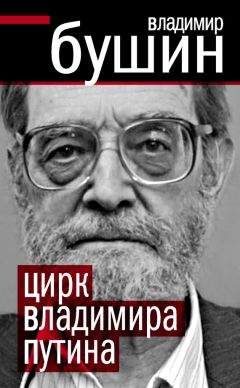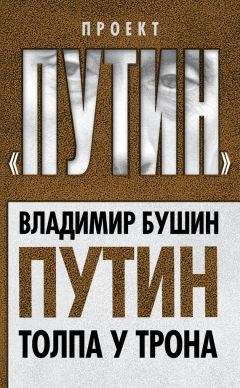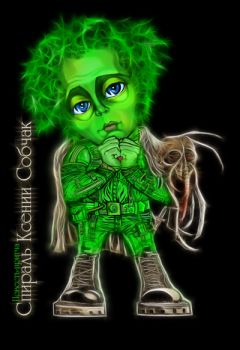Steven Dubner - Freakonomics
Cocaine had never been a big seller in the ghetto: it was too expensive. But that was before the invention of crack. This new product was ideal for a low-income, street-level customer. Because it required such a tiny amount of pure cocaine, one hit of crack cost only a few dollars. Its powerful high reached the brain in just a few seconds—and then faded fast, sending the user back for more. From the outset, crack was bound to be a huge success.
And who better to sell it than the thousands of junior members of all those street gangs like the Black Gangster Disciple Nation? The gangs already owned the territory—real estate was, in essence, their core business—and they were suitably menacing to keep customers from even thinking about ripping them off.
Suddenly the urban street gang evolved from a club for wayward teenagers into a true commercial enterprise.
The gang also presented an opportunity for longtime employment. Before crack, it was just about impossible to earn a living in a street gang. When it was time for a gangster to start supporting a family, he would have to quit. There was no such thing as a thirty-year-old gangster: he was either working a legitimate job, dead, or in prison. But with crack, there was real money to be made. Instead of moving on and making way for the younger gangsters to ascend, the veterans stayed put.
This was happening just as the old-fashioned sort of lifetime jobs—factory jobs especially—were disappearing. In the past, a semi-skilled black man in Chicago could earn a decent wage working in a factory. With that option narrowing, crack dealing looked even better. How hard could it be? The stuff was so addictive that a fool could sell it.
Who cared if the crack game was a tournament that only a few of them could possibly win? Who cared if it was so dangerous—standing out there on a corner, selling it as fast and anonymously as McDonald’s sells hamburgers, not knowing any of your customers, wondering who might be coming to arrest or rob or kill you? Who cared if your product got twelve-year-olds and grandmothers and preachers so addicted that they stopped thinking about anything except their next hit? Who cared if crack killed the neighborhood?
For black Americans, the four decades between World War II and the crack boom had been marked by steady and often dramatic improvement. Particularly since the civil rights legislation of the mid-1960s, the telltale signs of societal progress had finally taken root among black Americans. The black-white income gap was shrinking. So was the gap between black children’s test scores and those of white children. Perhaps the most heartening gain had been in infant mortality.
As late as 1964, a black infant was twice as likely to die as a white infant, often of a cause as basic as diarrhea or pneumonia. With segregated hospitals, many black patients received what amounted to Third World care. But that changed when the federal government ordered the hospitals to be desegregated: within just seven years, the black infant mortality rate had been cut in half. By the 1980s, virtually every facet of life was improving for black Americans, and the progress showed no sign of stopping.
Then came crack.
While crack use was hardly a black-only phenomenon, it hit black neighborhoods much harder than most. The evidence can be seen by measuring the same indicators of societal progress cited above. After decades of decline, black infant mortality began to soar in the 1980s, as did the rate of low-birthweight babies and parent abandonment. The gap between black and white schoolchildren widened. The number of blacks sent to prison tripled. Crack was so dramatically destructive that if its effect is averaged for all black Americans, not just crack users and their families, you will see that the group’s postwar progress was not only stopped cold but was often knocked as much as ten years backward. Black Americans were hurt more by crack cocaine than by any other single cause since Jim Crow.
And then there was the crime. Within a five-year period, the homicide rate among young urban blacks quadrupled. Suddenly it was just as dangerous to live in parts of Chicago or St. Louis or Los Angeles as it was to live in Bogotá.
The violence associated with the crack boom was various and relentless. It coincided with an even broader American crime wave that had been building for two decades. Although the rise of this crime wave long predated crack, the trend was so exacerbated by crack that criminologists got downright apocalyptic in their predictions. James Alan Fox, perhaps the most widely quoted crime expert in the popular press, warned of a coming “bloodbath” of youth violence.
But Fox and the other purveyors of conventional wisdom were wrong. The bloodbath did not materialize. The crime rate in fact began to fall—so unexpectedly and dramatically and thoroughly that now, from the distance of several years, it is almost hard to recall the crushing grip of that crime wave.
Why did it fall?
For a few reasons, but one of them more surprising than the rest. Oscar Danilo Blandon, the so-called Johnny Appleseed of Crack, may have been the instigator of one ripple effect, in which by his actions a single person inadvertently causes an ocean of despair. But unbeknownst to just about everybody, another remarkably powerful ripple effect—this one moving in the opposite direction—
had just come into play.
In Levitt’s abortion paper, published in 2001, he and his co-author John Donohue warned that their findings “should not be misinterpreted as either an endorsement of abortion or a call for intervention by the state in the fertility decisions of women.” They even suggested that crime might just as easily be curbed by “providing better environments for those children at greatest risk for future crime.”
Still, the very topic managed to offend just about everyone. Conservatives were enraged that abortion could be construed as a crime-fighting tool. Liberals were aghast that poor and black women were singled out. Economists grumbled that Levitt’s methodology was not sound. As the media gorged on the abortion-crime story, Levitt came under direct assault. He was called an ideologue (by conservatives and liberals alike), a eugenicist, a racist, and downright evil.
In reality, he seems to be very much none of those. He has little taste for politics and even less for moralizing. He is genial, low-key and unflappable, confident but not cocky. He speaks with a considerable lisp. His appearance is High Nerd: a plaid button-down shirt, nondescript khakis and a braided belt, brown sensible shoes. His pocket calendar is branded with the National Bureau of Economic Research logo. “I wish he would get more than three haircuts a year,” says his wife, Jeannette, “and that he wasn’t still wearing the same glasses he got fifteen years ago, which weren’t even in fashion then.” He was a good golfer in high school but has so physically atrophied that he calls himself “the weakest human being alive” and asks Jeannette to open jars around the house.
There is nothing in his appearance or manner, in other words, that suggests a flamethrower.
—THE N EW Y ORK T IMES M AGAZINE, AUGUST 3, 2003
4
Where Have All the Criminals Gone?
In 1966, one year after Nicolae Ceaus¸escu became the Communist dictator of Romania, he made abortion illegal. “The fetus is the property of the entire society,” he proclaimed. “Anyone who avoids having children is a deserter who abandons the laws of national continuity.”
Such grandiose declarations were commonplace during Ceau?escu’s reign, for his master plan—to create a nation worthy of the New Socialist Man—was an exercise in grandiosity. He built palaces for himself while alternately brutalizing and neglecting his citizens. Abandoning agriculture in favor of manufacturing, he forced many of the nation’s rural dwellers into unheated apartment buildings.
He gave government positions to forty family members including his wife, Elena, who required forty homes and a commensurate supply of fur and jewels.
Madame Ceau?escu, known officially as the Best Mother Romania Could Have, was not particularly maternal. “The worms never get satisfied, regardless of how much food you give them,” she said when Romanians complained about the food shortages brought on by her husband’s mismanagement. She had her own children bugged to ensure their loyalty.
Ceau?escu’s ban on abortion was designed to achieve one of his major aims: to rapidly strengthen Romania by boosting its population. Until 1966, Romania had had one of the most liberal abortion policies in the world. Abortion was in fact the main form of birth control, with four abortions for every live birth. Now, virtually overnight, abortion was forbidden. The only exemptions were mothers who already had four children or women with significant standing in the Communist Party. At the same time, all contraception and sex education were banned. Government agents sardonically known as the Menstrual Police regularly rounded up women in their work-places to administer pregnancy tests.
If a woman repeatedly failed to conceive, she was forced to pay a steep “celibacy tax.”
Ceaus¸escu’s incentives produced the desired effect. Within one year of the abortion ban, the Romanian birth rate had doubled. These babies were born into a country where, unless you belonged to the Ceau?escu clan or the Communist elite, life was miserable. But these children would turn out to have particularly miserable lives. Compared to Romanian children born just a year earlier, the cohort of children born after the abortion ban would do worse in every measurable way: they would test lower in school, they would have less success in the labor market, and they would also prove much more likely to become criminals.
The abortion ban stayed in effect until Ceau?escu finally lost his grip on Romania. On December 16, 1989, thousands of people took to the streets of Timisoara to protest his corrosive regime. Many of the protestors were teenagers and college students. The police killed dozens of them. One of the opposition leaders, a forty-one-year-old professor, later said it was his thirteen-year-old daughter who insisted he attend the protest, despite his fear. “What is most interesting is that we learned not to be afraid from our children,” he said. “Most were aged thirteen to twenty.” A few days after the massacre in Timisoara, Ceaus¸escu gave a speech in Bucharest before one hundred thousand people.
Again the young people were out in force. They shouted down Ceau?escu with cries of “Timisoara!” and “Down with the murderers!” His time had come. He and Elena tried to escape the country with $1 billion, but they were captured, given a crude trial, and, on Christmas Day, executed by firing squad.
Of all the Communist leaders deposed in the years bracketing the collapse of the Soviet Union, only Nicolae Ceau?escu met a violent death. It should not be overlooked that his demise was precipitated in large measure by the youth of Romania—a great number of whom, were it not for his abortion ban, would never have been born at all.
The story of abortion in Romania might seem an odd way to begin telling the story of American crime in the 1990s. But it’s not. In one important way, the Romanian abortion story is a reverse image of the American crime story. The point of overlap was on that Christmas Day of 1989, when Nicolae Ceau?escu learned the hard way—with a bullet to the head—that his abortion ban had much deeper implications than he knew.
On that day, crime was just about at its peak in the United States. In the previous fifteen years, violent crime had risen 80 percent. It was crime that led the nightly news and the national conversation.
When the crime rate began falling in the early 1990s, it did so with such speed and suddenness that it surprised everyone. It took some experts many years to even recognize that crime was falling, so confident had they been of its continuing rise. Long after crime had peaked, in fact, some of them continued to predict ever darker scenarios. But the evidence was irrefutable: the long and brutal spike in crime was moving in the opposite direction, and it wouldn’t stop until the crime rate had fallen back to the levels of forty years earlier.
Now the experts hustled to explain their faulty forecasting. The criminologist James Alan Fox explained that his warning of a “blood-bath” was in fact an intentional overstatement. “I never said there would be blood flowing in the streets,” he said, “but I used strong terms like ‘bloodbath’ to get people’s attention. And it did. I don’t apologize for using alarmist terms.” (If Fox seems to be offering a distinction without a difference—“bloodbath” versus “blood flowing in the streets”—we should remember that even in retreat mode, experts can be self-serving.)
After the relief had settled in, after people remembered how to go about their lives without the pressing fear of crime, there arose a natural question: just where did all those criminals go?
At one level, the answer seemed puzzling. After all, if none of the criminologists, police officials, economists, politicians, or others who traffic in such matters had foreseen the crime decline, how could they suddenly identify its causes?
But this diverse army of experts now marched out a phalanx of hypotheses to explain the drop in crime. A great many newspaper articles would be written on the subject. Their conclusions often hinged on which expert had most recently spoken to which reporter. Here, ranked by frequency of mention, are the crime-drop explanations cited in articles published from 1991 to 2001 in the ten largest-circulation papers in the LexisNexis database:
CRIME-D ROP EXPLANATION
NUMBER OF
CITATIONS
1. Innovative policing strategies
52
2. Increased reliance on prisons
47
3. Changes in crack and other drug markets
33
4. Aging of the population
32
5. Tougher gun control laws
32
6. Strong economy
28
7. Increased number of police
26
8. All other explanations (increased use of capital 34
punishment, concealed-weapons laws, gun buybacks, and others)
If you are the sort of person who likes guessing games, you may wish to spend the next few moments pondering which of the preceding explanations seem to have merit and which don’t. Hint: of the seven major explanations on the list, only three can be shown to have contributed to the drop in crime. The others are, for the most part, figments of someone’s imagination, self-interest, or wishful thinking. Further hint: one of the greatest measurable causes of the crime drop does not appear on the list at all, for it didn’t receive a single newspaper mention.
Let’s begin with a fairly uncontroversial one: the strong economy. The decline in crime that began in the early 1990s was accompanied by a blistering national economy and a significant drop in unemployment. It might seem to follow that the economy was a hammer that helped beat down crime. But a closer look at the data destroys this theory. It is true that a stronger job market may make certain crimes relatively less attractive. But that is only the case for crimes with a direct financial motivation—burglary, robbery, and auto theft—as opposed to violent crimes like homicide, assault, and rape. Moreover, studies have shown that an unemployment decline of 1 percentage point accounts for a 1 percent drop in nonviolent crime. During the 1990s, the unemployment rate fell by 2 percentage points; nonviolent crime, meanwhile, fell by roughly 40 percent. But an even bigger flaw in the strong-economy theory concerns violent crime. Homicide fell at a greater rate during the 1990s than any other sort of crime, and a number of reliable studies have shown virtually no link between the economy and violent crime. This weak link is made even weaker by glancing back to a recent decade, the 1960s, when the economy went on a wild growth spurt—as did violent crime.



